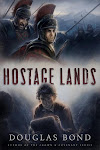 |
| Gesture toward the unopened door... |
INKBLOTS—May 6, 2013
Birds twittering in the cottonwoods
outside—I’m seeing lavender azaleas on the verge of the forest that surrounds D
McComas’s brick house in the country—great setting for creating and for beating
each other up (in love and gently). It’s warm and feels like summer, though
we’re all from around here so we know what’s coming; May is our nicest month
and June comes and summer and the rain will return, but we’re okay with that; it’s
the weather that pleases me because it’s clearly the weather that pleases the
Lord.
Patrick shared some of the
impressive images from the illustrator he has discovered. We talked about
animation and illustrations. Then John read his chapter three from Saving
Grace. A good deal of showing, less telling. More description of specific
mannerisms; good deal of improvement. I mentioned Thoreau’s advice on self
editing: find the place where you’re writing at your best and replicate that in
the rest (I added the metered couplet). We all agreed that the locker scene
where Grace is in earnest we began to be emotionally invested (as Patrick
termed it). We begin to feel Grace’s fear when we see that her boyfriend is
casual about it all and not feeling her pain.
Umberto Eco says that you use
early chapters to train your reader to be prepared for following a detailed
theological passage later. I agree. By creating fascinatingly real characters
in a real-world setting from hundreds of years ago. The key I think is that the
author has got to get the reader invested in the character; they have to
believe that it is going to be worth it to follow the fortunes of this
character in trouble and needing a way out. The first few chapters must give
the reader a sense that what is happening to this character is rivetingly
important, needs their attention, is worth their attention, and all the while
the reader should be so captivated they never think about any of this at the
time!
Patrick brings us up to speed
on graphic novels as a genre. He brought a copy of Maus (Mouse, in German), Art Spiegelman, the Mt Rushmore of graphic
novels, Pulitzer Prize winning graphic novel. Jews are mice, the Nazis are
cats, Americans are dogs—WW II setting, top of the list for graphic novels. Blankets by Craig Thompson, with
objectionable content and the tragedy of a guy giving up being a Christian,
unhappy ending, real downer, depressing book. Japanese made comic books into
graphic serial novels. Watchman,
Allan Moore, considered by some to be the most famous writer of comic books;
it’s a satire on super heroes. Celtx program for writing film, graphic novels,
and novels, work collaboratively.
Patrick reads the hardest
part of the graphic novel built on the Epic
of Gilgamesh, Puritans and the others. He is considering doing this in
collaboration with an illustrator, funds raised through KickStarter. There’s
lots of directing involved in writing a graphic novel, planning out the panels
as part of the way the story unfolds. The writer narrates the blocks for the
illustrator (where there is not text or little text). I want to understand this
genre and I know almost nothing about it. I saw Japanese men reading graphic
novels on the Tokyo
subway some years ago, but that’s about my only connection to this genre. It is
fascinating to hear Patrick talk about all this. He really has studied the
genre, it seems to me, and that work has contributed to his work on producing
his own graphic novel, in which he will demonstrate that either we’re all
insane or Christianity is actually true after all. This genre requires, I beginning
to think, a great deal of coordination with the illustrator; much more of a
partnership than in text novel writing, even if illustrated occasionally. I
wonder if there are other Christian writers making headway into this genre?
“Greatness only brings the greater grief... and once again it becomes our
precious treasure.” Lots of this level of narrative from Patrick’s imagination.
I just checked and there are enough writers of graphic novels with an
intentional Christian message that there must be several publishers of
Christian graphic novels. Art-on-the-Ave art coordinator is Patrick Korsec,
Inkblot member.
I read the first chapter of
HAMMER OF THE HUGUENOTS, or something like that.
D Mac reads his Korean War
novel. The war is prolonged and the protagonist is feeling ground down, eager
to get home and see this war behind him. Chosen Reservoir when the Chinese
began to enter the war. Ship turning hard to port. Weather, summer ends
abruptly and its winter, cold, cold. Harsher voice… could you give us an audio
comparison, growling like a… in a voice that reminded Thomas of… Good writing,
word pictures, sights, good dialogue. I’d like to get more sense of smell and
sounds.
Patrick calls it the gesture
toward the unopened door. Creates curiosity in the reader, a sense of
anticipation, something is coming, there is a payoff coming. Set the hook by
gesturing toward the unopened door. Tolkien restarted the Lord of the Rings ten times, throw it out, start it over. Wanted a
complete world. No unopened doors. Whereas Lewis was riveted on the unopened
door, the mystery, the unknown. The more complete we try to make the fictional
world the more incomplete it becomes. There is always an unopened, unexplained,
unexplainable dimension to the world, broken and out of joint as it is.





























